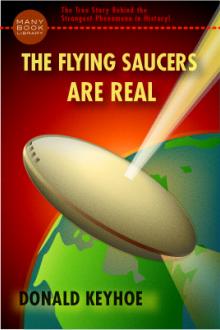The Expression of Emotion in Man and Animals by Charles Darwin (adult books to read TXT) 📕

- Author: Charles Darwin
- Performer: -
Book online «The Expression of Emotion in Man and Animals by Charles Darwin (adult books to read TXT) 📕». Author Charles Darwin
I have myself felt, and have observed in other grown-up persons, that when tears are restrained with difficulty, as in reading a pathetic story, it is almost impossible to prevent the various muscles.
which with young children are brought into strong action during their screaming-fits, from slightly twitching or trembling.
[6] `Mimik und Physiognomik,’ 1867, s. 102. Duchenne, Mecanisme de la Phys. Humaine, Album, p. 34.
Infants whilst young do not shed tears or weep, as is well known to nurses and medical men. This circumstance is not exclusively due to the lacrymal glands being as yet incapable of secreting tears.
I first noticed this fact from having accidentally brushed with the cuff of my coat the open eye of one of my infants, when seventy-seven days old, causing this eye to water freely; and though the child screamed violently, the other eye remained dry, or was only slightly suffused with tears.
A similar slight effusion occurred ten days previously in both eyes during a screaming-fit. The tears did not run over the eyelids and roll down the cheeks of this child, whilst screaming badly, when 122 days old.
This first happened 17 days later, at the age of 139 days.
A few other children have been observed for me, and the period of free weeping appears to be very variable. In one case, the eyes became slightly suffused at the age of only 20 days; in another, at 62 days.
With two other children, the tears did NOT run down the face at the ages of 84
and 110 days; but in a third child they did run down at the age of 104 days.
In one instance, as I was positively assured, tears ran down at the unusually early age of 42 days. It would appear as if the lacrymal glands required some practice in the individual before they are easily excited into action, in somewhat the same manner as various inherited consensual movements and tastes require some exercise before they are fixed and perfected.
This is all the more likely with a habit like weeping, which must have been acquired since the period when man branched off from the common progenitor of the genus Homo and of the non-weeping anthropomorphous apes.
[7] Dr. Duchenne makes this remark, ibid. p. 39.
The fact of tears not being shed at a very early age from pain or any mental emotion is remarkable, as, later in life, no expression is more general or more strongly marked than weeping. When the habit has once been acquired by an infant, it expresses in the clearest manner suffering of all kinds, both bodily pain and mental distress, even though accompanied by other emotions, such as fear or rage.
The character of the crying, however, changes at a very early age, as I noticed in my own infants,—the passionate cry differing from that of grief.
A lady informs me that her child, nine months old, when in a passion screams loudly, but does not weep; tears, however, are shed when she is punished by her chair being turned with its back to the table.
This difference may perhaps be attributed to weeping being restrained, as we shall immediately see, at a more advanced age, under most circumstances excepting grief; and to the influence of such restraint being transmitted to an earlier period of life, than that at which it was first practised.
With adults, especially of the male sex, weeping soon ceases to be caused by, or to express, bodily pain. This may be accounted for by its being thought weak and unmanly by men, both of civilized and barbarous races, to exhibit bodily pain by any outward sign.
With this exception, savages weep copiously from very slight causes, of which fact Sir J. Lubbock[8] has collected instances.
A New Zealand chief “cried like a child because the sailors spoilt his favourite cloak by powdering it with flour.”
I saw in Tierra del Fuego a native who had lately lost a brother, and who alternately cried with hysterical violence, and laughed heartily at anything which amused him. With the civilized nations of Europe there is also much difference in the frequency of weeping.
Englishmen rarely cry, except under the pressure of the acutest grief; whereas in some parts of the Continent the men shed tears much more readily and freely.
The insane notoriously give way to all their emotions with little or no restraint; and I am informed by Dr. J. Crichton Browne, that nothing is more characteristic of simple melancholia, even in the male sex, than a tendency to weep on the slightest occasions, or from no cause.
They also weep disproportionately on the occurrence of any real cause of grief. The length of time during which some patients weep is astonishing, as well as the amount of tears which they shed.
One melancholic girl wept for a whole day, and afterwards confessed to Dr. Browne, that it was because she remembered that she had once shaved off her eyebrows to promote their growth. Many patients in the asylum sit for a long time rocking themselves backwards and forwards; “and if spoken to, they stop their movements, purse up their eyes, depress the corners of the mouth, and burst out crying.”
In some of these cases, the being spoken to or kindly greeted appears to suggest some fanciful and sorrowful notion; but in other cases an effort of any kind excites weeping, independently of any sorrowful idea.
Patients suffering from acute mania likewise have paroxysms of violent crying or blubbering, in the midst of their incoherent ravings.
We must not, however, lay too much stress on the copious shedding of tears by the insane, as being due to the lack of all restraint; for certain brain-diseases, as hemiplegia, brain-wasting, and senile decay, have a special tendency to induce weeping.
Weeping is common in the insane, even after a complete state of fatuity has been reached and the power of speech lost.
Persons born idiotic likewise weep;[9] but it is said that this is not the case with cretins.
[8] `The Origin of Civilization,’ 1870, p. 355.
Weeping seems to be the primary and natural expression, as we see in children, of suffering of any kind, whether bodily pain short of extreme agony, or mental distress. But the foregoing facts and common experience show us that a frequently repeated effort to restrain weeping, in association with certain states of the mind, does much in checking the habit. On the other hand, it appears that the power of weeping can be increased through habit; thus the Rev. R. Taylor,[10] who long resided in New Zealand, asserts that the women can voluntarily shed tears in abundance; they meet for this purpose to mourn for the dead, and they take pride in crying “in the most affecting manner.”
A single effort of repression brought to bear on the lacrymal glands does little, and indeed seems often to lead to an opposite result.
An old and experienced physician told me that he had always found that the only means to check the occasional bitter weeping of ladies who consulted him, and who themselves wished to desist, was earnestly to beg them not to try, and to assure them that nothing would relieve them so much as prolonged and copious crying.
[9] See, for instance, Mr. Marshall’s account of an idiot in Philosoph. Transact. 1864, p. 526. With respect to cretins, see Dr. Piderit, `Mimik und Physiognomik,’ 1867, s. 61.
[10] `New Zealand and its Inhabitants,’ 1855, p. 175.
The screaming of infants consists of prolonged expirations, with short and rapid, almost spasmodic inspirations, followed at a somewhat more advanced age by sobbing. According to Gratiolet,[11]
the glottis is chiefly affected during the act of sobbing.
This sound is heard “at the moment when the inspiration conquers the resistance of the glottis, and the air rushes into the chest.”
But the whole act of respiration is likewise spasmodic and violent.
The shoulders are at the same time generally raised, as by this movement respiration is rendered easier. With one of my infants, when seventy-seven days old, the inspirations were so rapid and strong that they approached in character to sobbing; when 138
days old I first noticed distinct sobbing, which subsequently followed every bad crying-fit. The respiratory movements are partly voluntary and partly involuntary, and I apprehend that sobbing is at least in part due to children having some power to command after early infancy their vocal organs and to stop their screams, but from having less power over their respiratory muscles, these continue for a time to act in an involuntary or spasmodic manner, after having been brought into violent action.
Sobbing seems to be peculiar to the human species; for the keepers in the Zoological Gardens assure me that they have never heard a sob from any kind of monkey; though monkeys often scream loudly whilst being chased and caught, and then pant for a long time.
We thus see that there is a close analogy between sobbing and the free shedding of tears; for with children, sobbing does not commence during early infancy, but afterwards comes on rather suddenly and then follows every bad crying-fit, until the habit is checked with advancing years.
[11] `De la Physionomie,’ 1865, p. 126.
On the cause of the contraction of the muscles round the eyes during screaming.—We have seen that infants and young children, whilst screaming, invariably close their eyes firmly, by the contraction of the surrounding muscles, so that the skin becomes wrinkled all around.
With older children, and even with adults, whenever there is violent and unrestrained crying, a tendency to the contraction of these same muscles may be observed; though this is often checked in order not to interfere with vision.
Sir C. Bell explains[12] this action in the following manner:—“During every violent act of expiration, whether in hearty laughter, weeping, coughing, or sneezing, the eyeball is firmly compressed by the fibres of the orbicularis; and this is a provision for supporting and defending the vascular system of the interior of the eye from a retrograde impulse communicated to the blood in the veins at that time.
When we contract the chest and expel the air, there is a retardation of the blood in the veins of the neck and head; and in the more powerful acts of expulsion, the blood not only distends the vessels, but is even regurgitated into the minute branches.
Were the eye not properly compressed at that time, and a resistance given to the shock, irreparable injury might be inflicted on the delicate textures of the interior of the eye.”
He further adds, “If we separate the eyelids of a child to examine the eye, while it cries and struggles with passion, by taking off the natural support to the vascular system of the eye, and means of guarding it against the rush of blood then occurring, the conjunctiva becomes suddenly filled with blood, and the eyelids everted.”
[12] `The Anatomy of Expression,’ 1844, p. 106. See also his paper in the `Philosophical Transactions,’ 1822, p. 284, ibid. 1823, pp.
166 and 289. Also `The Nervous System of the Human Body,’ 3rd edit.
1836, p. 175.
Not only are the muscles round the eyes strongly contracted, as Sir C. Bell states and as I have often observed, during screaming, loud laughter, coughing, and sneezing, but during several other analogous actions.
A man contracts these muscles when he violently blows his nose.
I asked one of my boys to shout as loudly as he possibly could, and as soon as he began, he firmly contracted his orbicular muscles;





Comments (0)